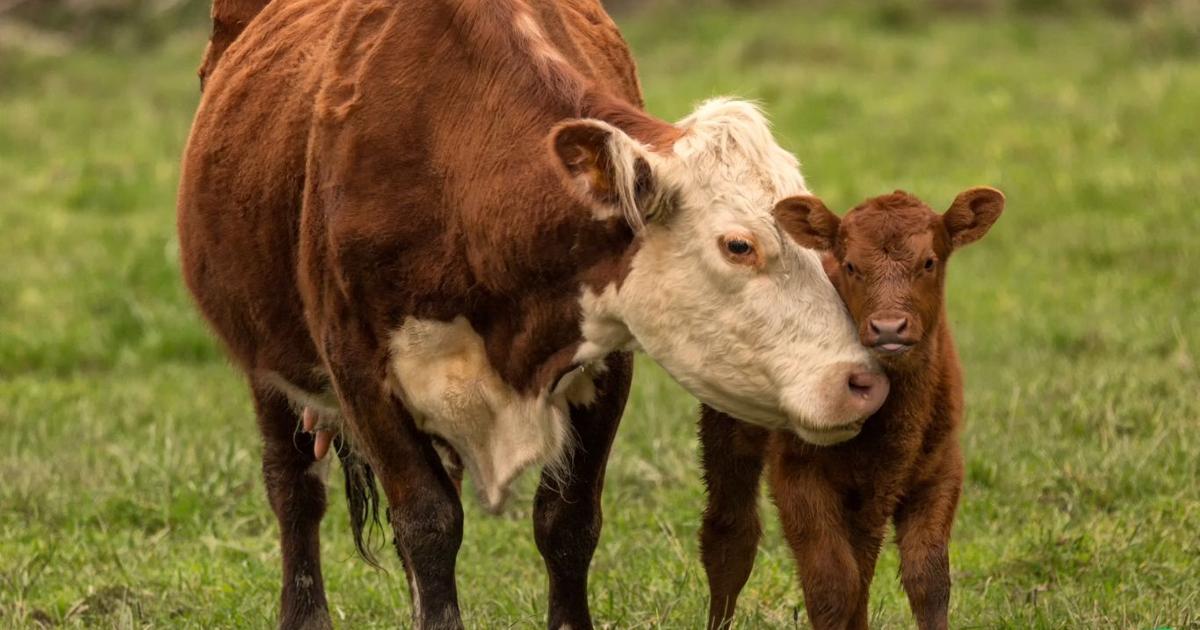
As calving season approaches, nutritional experts are emphasizing the importance of proper nutrition, both in the 90 days before calving and the period following calving.
“Late gestation and post-calving are when cows have the highest nutrient demands,” said Megan Van Emon, Montana State University (MSU) Extension beef cattle specialist.
Van Emon presented during a recent MSU webinar series dedicated to the calving season.
“The last 90-100 days of gestation are when that 15- to 20-pound fetus is growing into the 80-pound full-term calf, and the cow needs extra nutrients for that.”
Things producers should keep in mind during the pre-calving period include how nutrition affects the health of the offspring, the cow’s ability to withstand inclement weather, and reduced forage quality and quantity.
Post-calving also means the cow has increased nutrient requirements, including being able to produce enough milk for the calf, recover for rebreeding, and handle poor weather.
“During the post-calving season, we see the highest nutrient demand when the forage quality and quantity can still be limited,” Van Emon noted.
During both periods, producers may want to consider supplementation.
“In post-calving, or that period generally from March to May, it can be hard to say if we are going to have forage available for grazing,” Van Emon related. “So, saving back some higher quality feed for this time makes sure the cow can get ready for the next breeding season and be ready for the next calf.”
People are also reading…
When considering supplementation, a high protein supplement would consist of 20-40 percent, while a moderate amount would be 20 percent.
“We have to consider cost and convenience when it comes to supplementation, so that can mean tubs, blocks, cake or hay,” she said. “Protein supplements are great for late gestation because they also increase forage intake so a cow can get more out of a low-quality feed. It can also improve the cow’s body weight and condition score and reduce body weight loss from calving.”
During the post-calving season, when producers may be running out of forage, Van Emon said a grain-based energy supplement can help.
“When the overall forage intake might be reduced, this can help keep cows in condition,” she said. “But you want to be sure to keep the energy supplement steady and feed it on a daily basis, because they will overcompensate their forage intake on the off days if it isn’t consistent.”
When supplementing low-quality feeds, it can be important to see what the cattle palatability is.
“We can look at what they are leaving behind,” she said. “That’s indicative of their palatability. Forcing them to eat some of those feeds may not be the best for them health wise.”
When assessing a pre- and post-calving feeding program, Van Emon said one of the best tools is body condition score (BCS). The scoring system for beef cattle has a range of 1 to 9, with 1 representing very thin cows and 9 representing very fat cows. A cow with a BCS of 5 is said to be in “average” condition. Although the estimation of “average” can vary by producer, the system essentially categorizes low BCS cows as looking very sharp, angular and skinny, while higher BCS, or fatter cows, look smooth and boxy with bone structures increasingly hidden from sight or touch, according to university resources.
“One of the best tools we can use to see how our nutrition program is working for our cows is body condition score that measures the fat cover over those cows,” she said. “We aim for a score of 4 to 6.”
Van Emon said the best time to get a body condition score is when the cows are being worked.
“When you have the cows going through a chute system, that’s a good time to assess their condition,” she said. “This usually happens before breeding and during weaning.”
#lee-rev-content { margin:0 -5px; }
#lee-rev-content h3 {
font-family: inherit!important;
font-weight: 700!important;
border-left: 8px solid var(–lee-blox-link-color);
text-indent: 7px;
font-size: 24px!important;
line-height: 24px;
}
#lee-rev-content .rc-provider {
font-family: inherit!important;
}
#lee-rev-content h4 {
line-height: 24px!important;
font-family: “serif-ds”,Times,”Times New Roman”,serif!important;
margin-top: 10px!important;
}
@media (max-width: 991px) {
#lee-rev-content h3 {
font-size: 18px!important;
line-height: 18px;
}
}
#pu-email-form-breaking-email-article {
clear: both;
background-color: #fff;
color: #222;
background-position: bottom;
background-repeat: no-repeat;
padding: 15px 0 20px;
margin-bottom: 40px;
border-top: 4px solid rgba(0,0,0,.8);
border-bottom: 1px solid rgba(0,0,0,.2);
display: none;
}
#pu-email-form-breaking-email-article,
#pu-email-form-breaking-email-article p {
font-family: -apple-system, BlinkMacSystemFont, “Segoe UI”, Helvetica, Arial, sans-serif, “Apple Color Emoji”, “Segoe UI Emoji”, “Segoe UI Symbol”;
}
#pu-email-form-breaking-email-article h2 {
font-size: 24px;
margin: 15px 0 5px 0;
font-family: “serif-ds”, Times, “Times New Roman”, serif;
}
#pu-email-form-breaking-email-article .lead {
margin-bottom: 5px;
}
#pu-email-form-breaking-email-article .email-desc {
font-size: 16px;
line-height: 20px;
margin-bottom: 5px;
opacity: 0.7;
}
#pu-email-form-breaking-email-article form {
padding: 10px 30px 5px 30px;
}
#pu-email-form-breaking-email-article .disclaimer {
opacity: 0.5;
margin-bottom: 0;
line-height: 100%;
}
#pu-email-form-breaking-email-article .disclaimer a {
color: #222;
text-decoration: underline;
}
#pu-email-form-breaking-email-article .email-hammer {
border-bottom: 3px solid #222;
opacity: .5;
display: inline-block;
padding: 0 10px 5px 10px;
margin-bottom: -5px;
font-size: 16px;
}
@media (max-width: 991px) {
#pu-email-form-breaking-email-article form {
padding: 10px 0 5px 0;
}
}
.grecaptcha-badge { visibility: hidden; }
